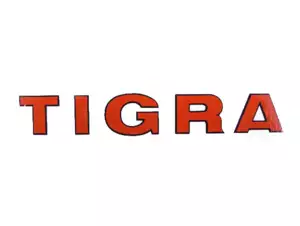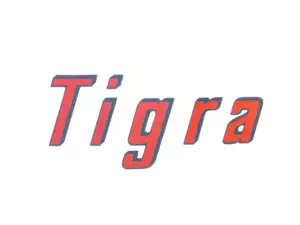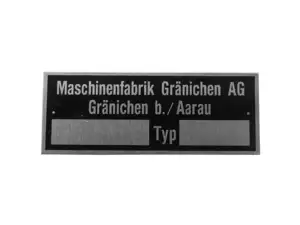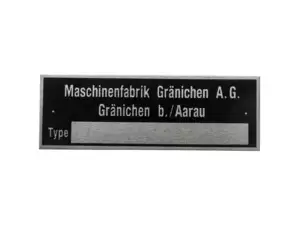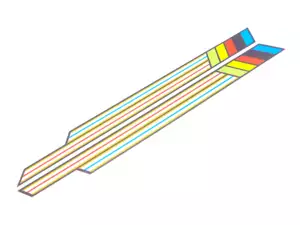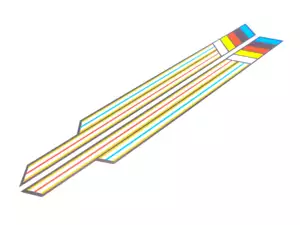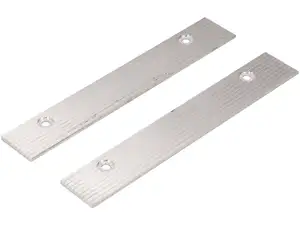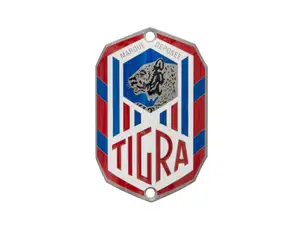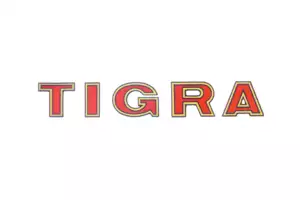
TIGRA
Tigra and his elegant 2-stroke wildcats
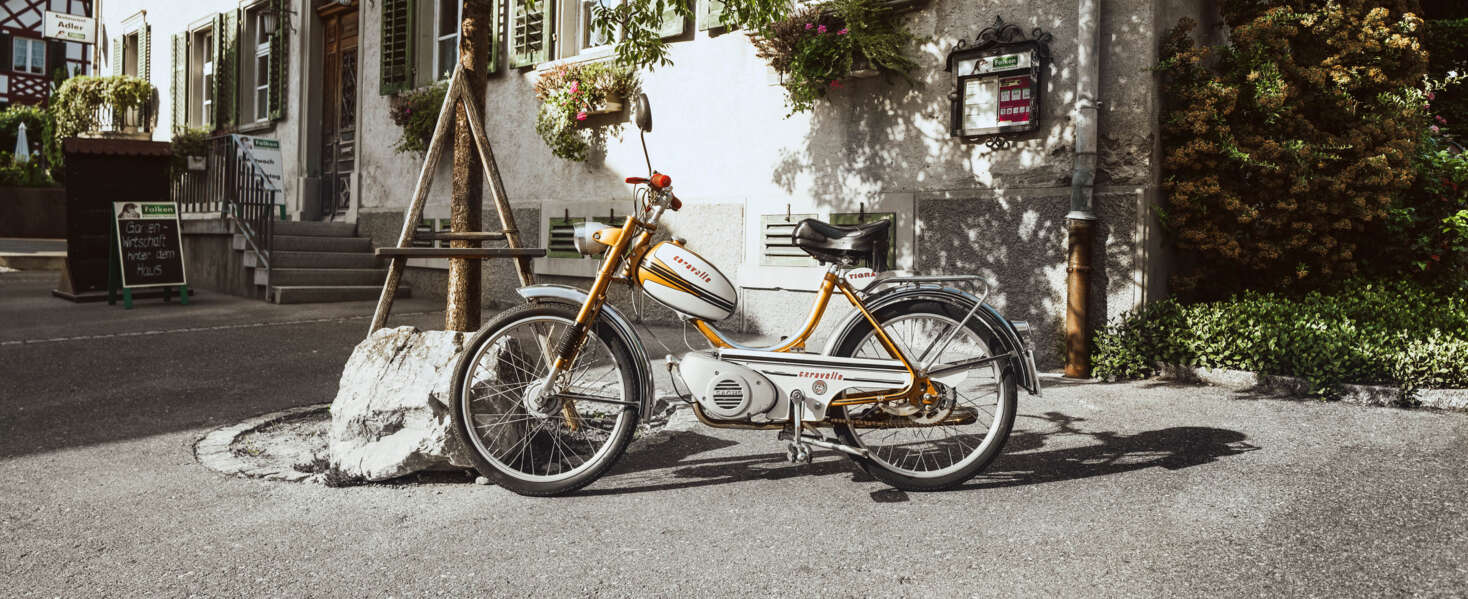
Tigra mopeds are popular classics today and are extremely rare, especially in their original condition. Anyone who can call one of these gems their own is therefore truly to be envied. We take a closer look at the history of the manufacturer behind the Tiger emblem and the coveted Caravelle and Pionier models.
| Seat |  |
| Status | |
| Foundation | 1930 |

From popular motorbikes and robust bicycles to the first mopeds
The company behind the brand name was originally founded as Maschinenfabrik Gränichen in the Swiss town of the same name. More precisely, the company was created by taking over the bankruptcy estate of the two-wheeler manufacturer J. Zehnder & Söhne Gränichen AG. This manufacturer is certainly familiar to some motorbike enthusiasts, as it was the company that produced the legendary "Zehnderli" light motorbike. This inexpensive and particularly reliable two-stroke motorbike, powered by a 110 cm3 Gockerell engine, was one of the most popular Swiss motorbikes in the mid-1920s. After J. Zehnder & Söhne Gränichen AG had to file for bankruptcy, Alfred Gautschi took over the company and transferred it to the newly founded Maschinenfabrik Gränichen AG (MAFAG). As a result, the "Zehnderli" model continued to be produced, now by MAFAG, until the end of the 1930s. In addition to the production of the popular "Zehnderli" motorbike, simple metal products were also manufactured in Gränichen. However, vehicle construction developed into the company's most important mainstay during the 1940s and from the 1950s at the latest.
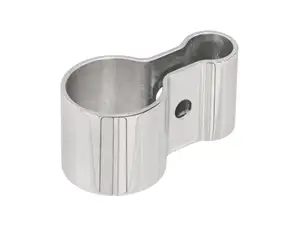
swiing® revival strut fender arch Inox | Tigra Caravelle / Pionier
Manufacturer: swiing® revival parts · Material: Chrome steel (colloquially known as stainless steel) · Surface: electropolished · Ø outside: 27 mm · Color: Chrome · Total length: 51 mm · Mounting type: Nuts & bolts · Number of fixing points: 1 pcs · Ø mounting hole: 5.4 mm
CHF 29.90
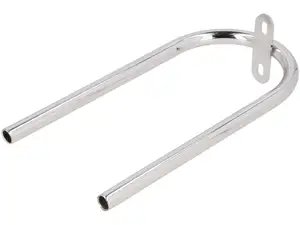
swiing® revival fender arch chrome | Tigra Caravelle / Pionier
Manufacturer: swiing® revival parts · Material: Steel · Surface: chrome-plated · Color: Chrome · Ø outside: 12 mm · Mounting type: Screws · Number of fixing points: 2 pcs · Wide intake: 110 mm · Hole spacing: 35 mm · Hole spacing: 40 mm · Total length: 215 mm
CHF 34.90
Page 1 of 4
The Tigra brand is born
In the 1950s, MAFAG focussed almost exclusively on the construction of bicycles. The product range included bicycles for children as well as women's and men's bikes. It was supplemented by luxury and sports bikes as well as tandems and touring bikes. These were launched under the Jaguar brand name, among others. However, Maschinenfabrik Gränichen didn't hit the big time in the field of bicycle production until it took over the Tigra bicycle factory in the early 1950s. The Tigra brand became very popular within a very short space of time. It also owed its popularity to the bicycle racing team of the same name, which was led by the famous racing driver Eric Grieshaber. Even after the takeover by MAFAG, the Tigra racing team remained successful. The team included such greats as Robert Hagmann, Rolf Graf and Paul Köchli. However, the growing enthusiasm for motorised two-wheelers, both in Switzerland and in the rest of Europe, meant that the plan was made in Gränichen to no longer sell mainly bicycles under the successful brand name, but also motorised two-wheelers. This was not limited to the independent production of the frames and some add-on parts; final assembly also took place at times in the MAFAG factory halls. However, the engines for the mopeds, which were sold under the brand name Tigra, came either from Sachs in Germany or from the legendary moped manufacturer Puch in Austria. Although the mopeds enjoyed great popularity and were in high demand, the bread and butter business remained the manufacture, construction and sale of bicycles.
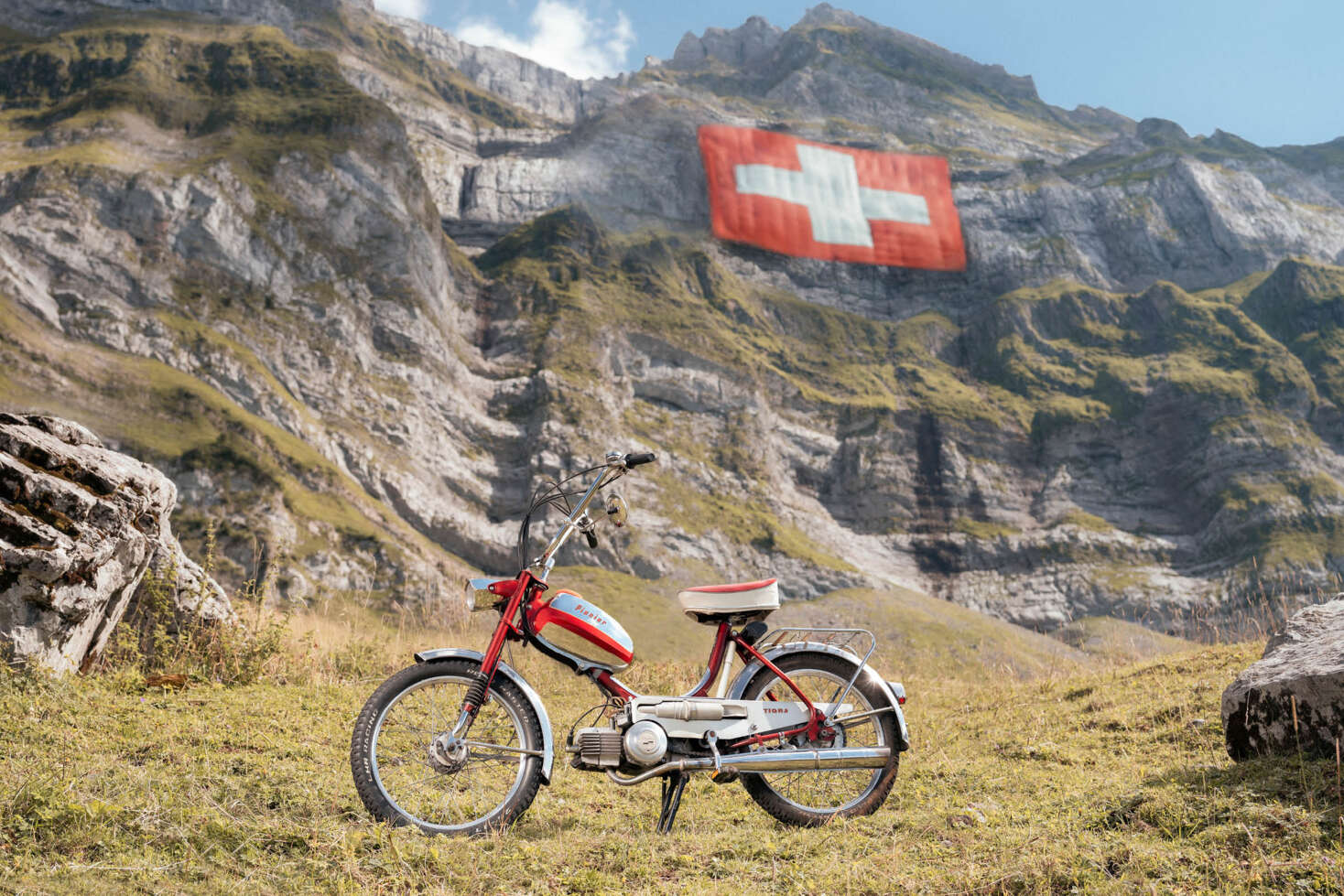
Later years and closure of the company
After the bicycle boom and the subsequent golden age of the motorbike in the 1970s and early 1980s, the plant in Gränichen and the Tigra brand also experienced a slow but steady decline. Low-cost competition from the Far East and declining demand put the manufacturer under pressure. In order to counter the decline in sales in the two-wheeler sector, the Gränichen plant once again focussed on plant and mechanical engineering. The Tigra bikes and mopeds were replaced in their role as flagship products by single-disc cleaning machines for floor care. Unfortunately, their success was also short-lived, so that Maschinenfabrik Gränichen finally had to close its doors for good in 1990. The Tigra trademark rights were acquired by the traditional manufacturer Gretener AG, which at least still produced the bikes until this company also had to file for bankruptcy in the early 2000s. This meant that the last two-wheelers with the legendary Tiger brand logo also disappeared. However, anyone who has saved one of the beautiful Caravelle or Pioneer mopeds over the years or wants to restore one of these time-honoured gems can breathe a sigh of relief, at least as far as the supply of spare parts is concerned. This is because the spare parts market for the brand's mopeds offers significantly more than is the case with other rare gems. One of the reasons for this is that Sachs and Puch engines were installed, which were also used by numerous other brands. This means that many parts are still relatively easy to obtain today.
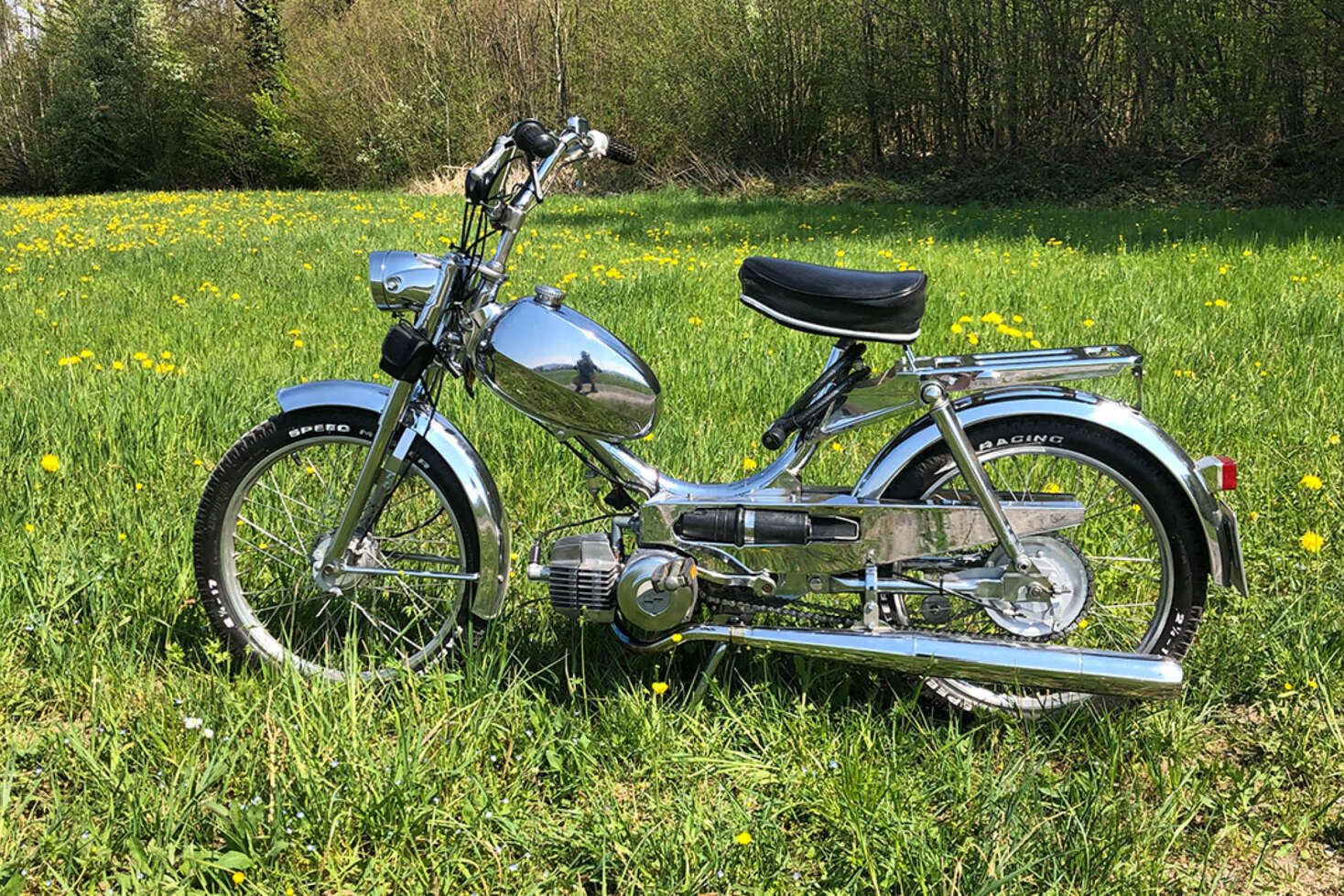
The most successful moped models
The mopeds that were launched under the Tigra brand name are real rarities today, especially if they are in their original condition, and will delight every moped enthusiast. The model range was quite manageable, but very successful and popular. This explains why both the Tigra Caravelle moped and the Tigra pioneer moped were built in almost unchanged form for many years. We would therefore like to briefly introduce you to both models:
The Pionier gem
The Pionier moped was one of the later mopeds launched under the brand name Tigra. With its delicate and elegant lines and the strikingly shaped tank, the slicer resembled the Zündapp-Belmondo moped, but was fitted with a Puch X30 engine at the factory. In this respect, the model differed from its predecessors with the Tigra emblem, as these were powered by Sachs engines. The proven and reliable Puch X30-N engine had a displacement of 48.8 cm3 and produced 0.8 hp. The pioneering moped proved its worth in the challenging Swiss topography and impressed with its genuine mountaineering capabilities. The gem was equipped with a telescopic fork and half-height sports handlebars. Both the spokes and the rims were made of high-quality, rustproof stainless steel, which is why they are still in very good condition today on most of the original models.

The Caravelle model
As befits its name, the Caravelle moped was the flagship of the Tigra moped segment for a long time. It was produced in many different versions over many years, all of which were powered by a Sachs engine, unlike the pioneering pearl. Depending on the model and year of manufacture, fan-cooled Sachs 50/2 engines with manual or automatic gearstick were used. In addition, these mopeds had a slightly smaller tank than the Pionier moped, which only held around 3.8 litres. The spokes of these mopeds were also made of stainless steel. However, unlike the Pionier gem, the mudguards were painted in a contrasting colour to the frame. What all mopeds from this manufacturer had in common was that they were characterised by extremely high-quality workmanship down to the last detail. This contributed significantly to the resounding success of the Tigra mopeds.
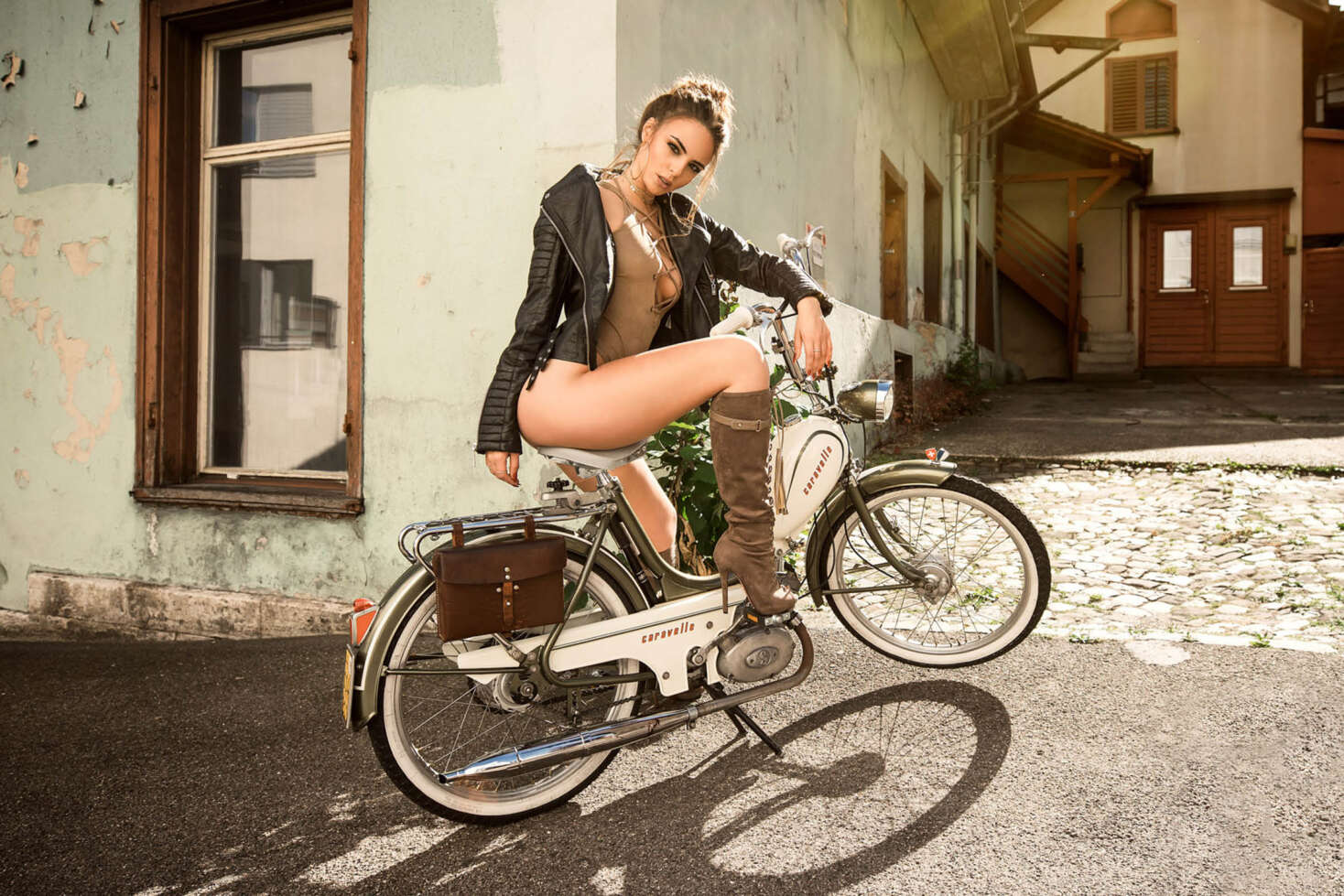
Discover more manufacturers
Our favorite manufacturers
